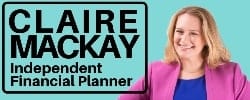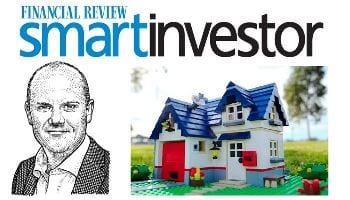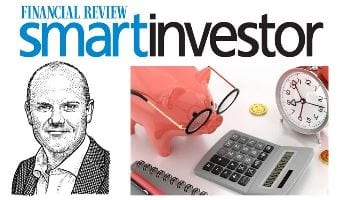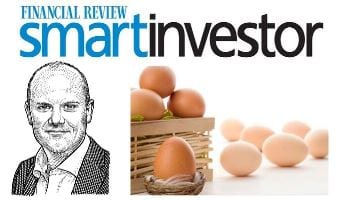Great investing ideas and portfolio management are different skills. Both are important but the latter goes well beyond making good individual investment decisions. If your current asset allocation is not in line with your target asset allocation, take action.
Note: This Quantum Financial article was originally published in the Australian Financial Review. You can view it on the AFR website [here] ($paywall)
Now is a great time to review your self-managed superannuation fund (SMSF) investment portfolio. Think of it like a jigsaw puzzle – you try to put the pieces in a structured order but as you move them, they bump each other.
There are two reasons you have a portfolio – to have more to spend in the future (ie, your returns are greater than inflation and after taxes) and to ensure you don’t permanently lose your capital. It’s not rocket science.
First decide your correct target asset allocation. This key split is between assets giving capital growth and income when markets rise (growth) and those giving income and capital protection when markets fall (defensive).
This is your key risk and return decision. For instance, if you’re a balanced growth investor, your SMSF may have a 70:30 (growth/defensive) or a 60:40 split. This is your fixed stake in the ground to use as a benchmark.
Within growth, determine what percentage growth exposure you want in domestic shares, international shares, REITs, property, hybrids and other growth assets. Use the same approach in the defensive allocation between cash, term deposits and bonds. This top-down approach is crucial for smart portfolio construction.
If your current asset allocation is not in line with your target asset allocation, take action. If your growth weighting is higher than target, then in current market conditions I’d be at least balancing back to target by selling some growth assets (mindful of tax implications).
Of course, deciding to sell can be the easy part. If you sell, where do you put the proceeds? If they sit in cash they are safe in the short term but will be eroded by inflation in the longer term. Term deposits are safe but offer low yields. Cash-enhanced exchange traded funds (ETFs) are one option for parking funds if you expect markets to fall and you want to reinvest.
Personally, I’m less positive than I have been in recent years and so we have an underweight growth exposure. If you differ and are bullish, consider what happens if you are wrong – construct a portfolio to survive those times.
If instead you chase yield into stocks paying franking credits or hybrids, ask yourself how defensive their capital value is when the proverbial hits the fan. Their income is also not guaranteed when things go south.
The yields on cash and term deposits are horrible but sometimes it’s smarter to go for safety than to chase yield. Having a higher allocation to defensive assets now should support your needs through any market downturn and also allow you to buy back into future depressed markets.
Within equities, be mindful of the split between Australian and international shares. We currently have a higher weighting to US and international equities than Australian shares. If global markets fall, it will be because global growth is slowing. If the US and Australian markets both fall, there would be a flight to the relative safety of the US. Our currency is a proxy for commodities which would suffer if growth slows, so US investments could benefit from a falling Australian dollar.
The downside to this is we have lower exposure to the high-yielding, franking-credit-paying stocks that we have all long loved. Again, this is all part of the jigsaw of protecting capital and chasing yield.
I liken the actual investments in your portfolio to Lego blocks. You want them to be fairly standard, low-cost and durable. They should click together easily to make a strong, well-built portfolio. Instead the market bombards you with a dazzling array of complex investments that promise the world.
Everyone will have their favourite building blocks. When I was an equity analyst, my favourite were individual shares. As a property analyst I was partial to property. When I shifted to financial planning the standard solution was managed funds.
Today my preference is for low-cost, diversified ETFs in an SMSF, but you will have your own preferred mix of investments. While investment selection is crucial, it should fall a distant second behind your asset allocation decisions.
Be mindful that great investing ideas and portfolio management are different skills. Both are important but successful portfolio construction goes well beyond making good individual investment decisions.
Tim Mackay is an independent advisor at Quantum Financial. You can view his personal website at www.theindependentfinancialadvisor.com.au
You can view the original Australian Financial Review article by Tim Mackay ‘Portfolio construction in defensive time’ in PDF format below.
Other Australian Financial Review articles by Quantum Financial advisors that you may find interesting:
- Time for a portfolio fine-tune
- Why politicians need to understand the true nature of SMSFs
- Industry funds’ DIY options could help you keep franking credits
- Complexity helps justify fees
- Top 100 SMSFs control $8 billion
- Banking royal commission: what SMSF investors need to know
- An SMSF action plan to keep your fund running smoothly
- Why inviting your kids into SMSF is a bad idea
- How to simplify your self-managed superannuation fund
- How to keep your SMSF alive
- When to close your SMSF
- Why SMSF advisers need to lift their game
- Should you really set up a self-managed superannuation fund?
- Who to include in your self-managed super fund
- Opt in for long-term profits
- Restoring trust in financial advice




